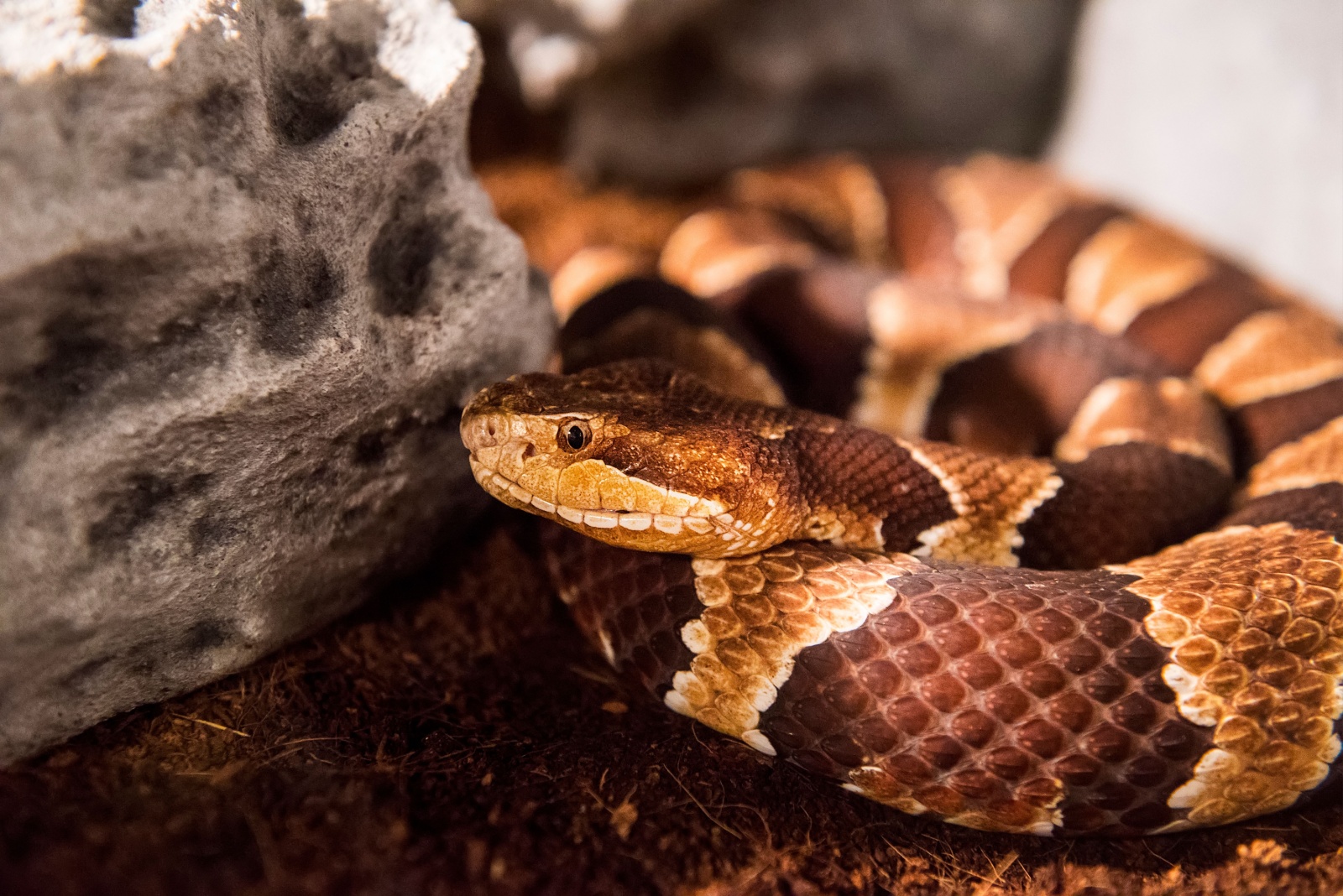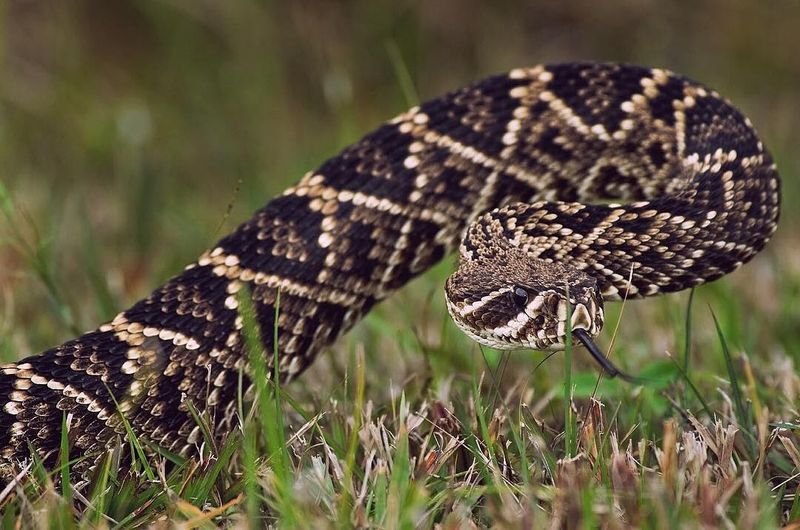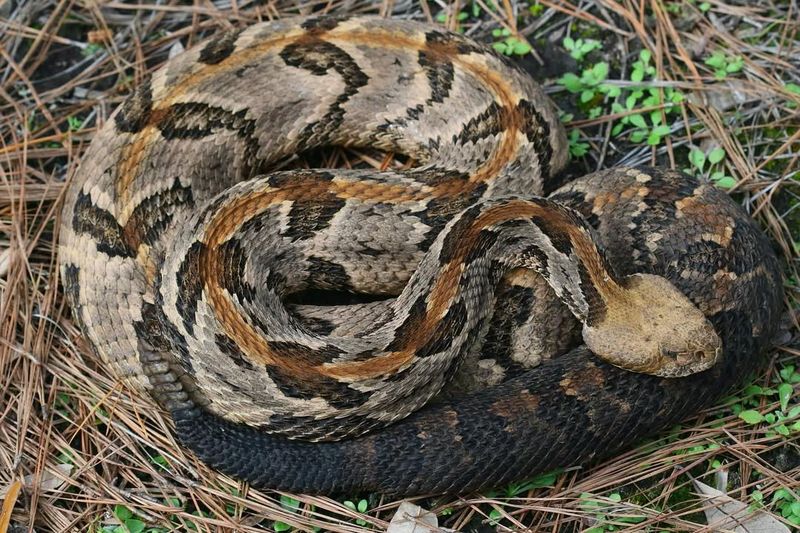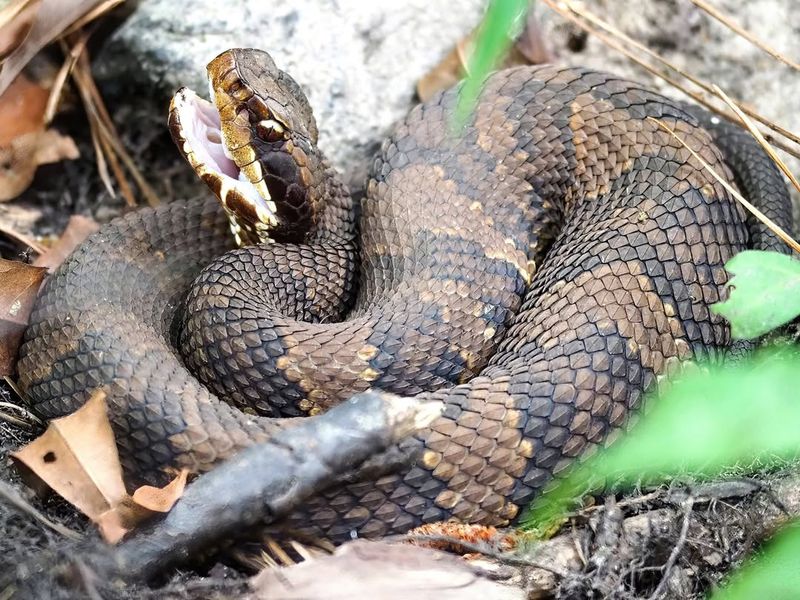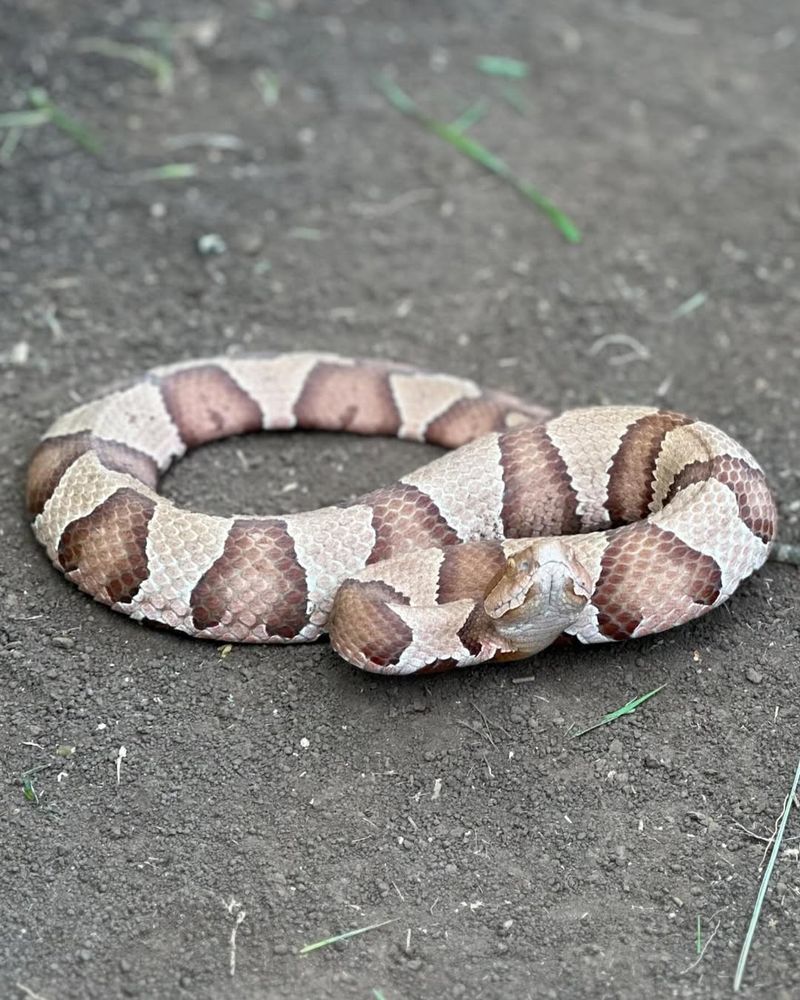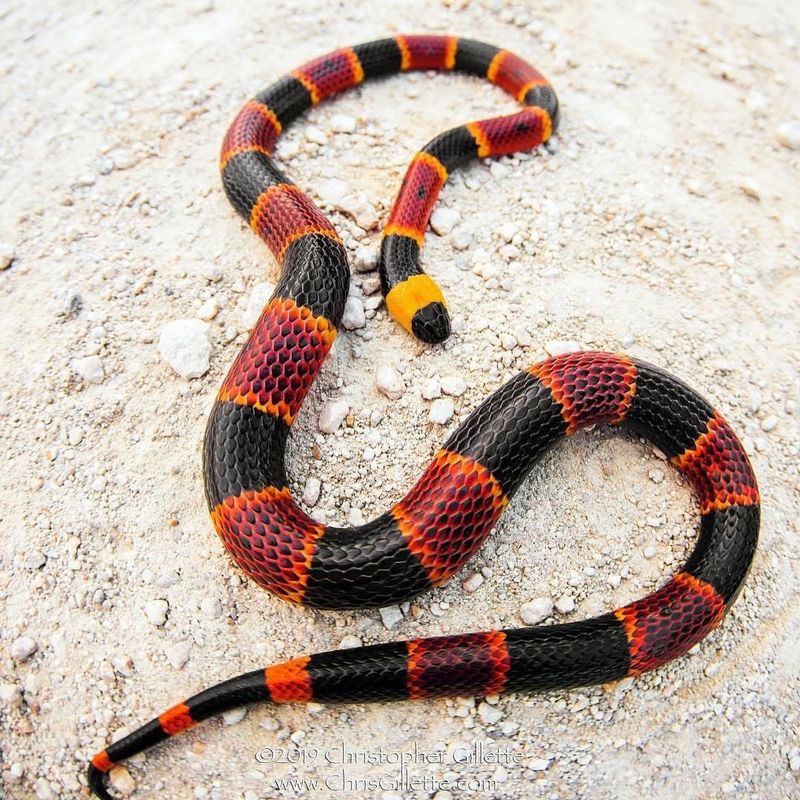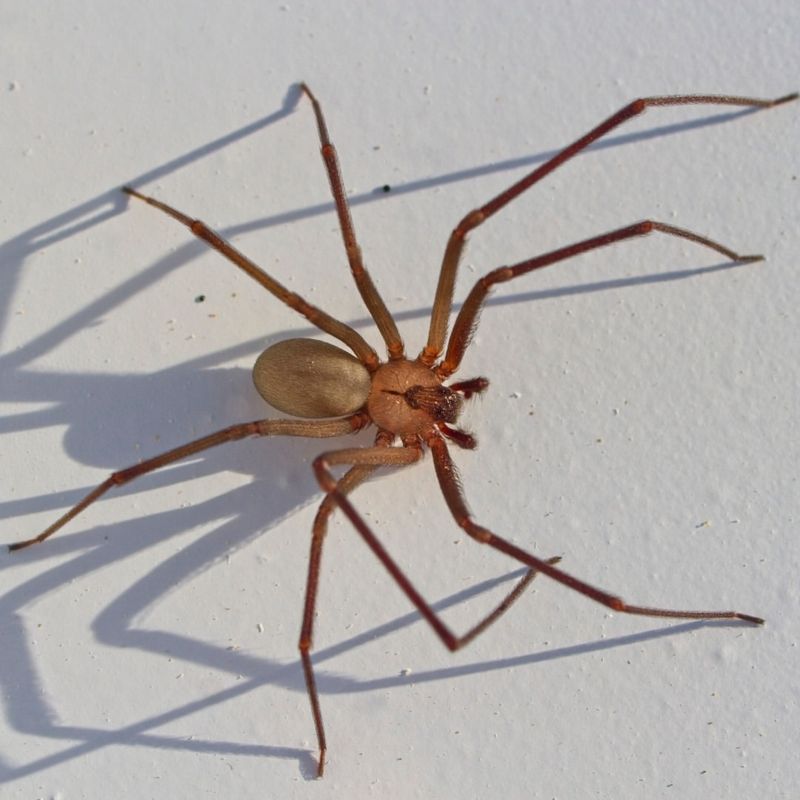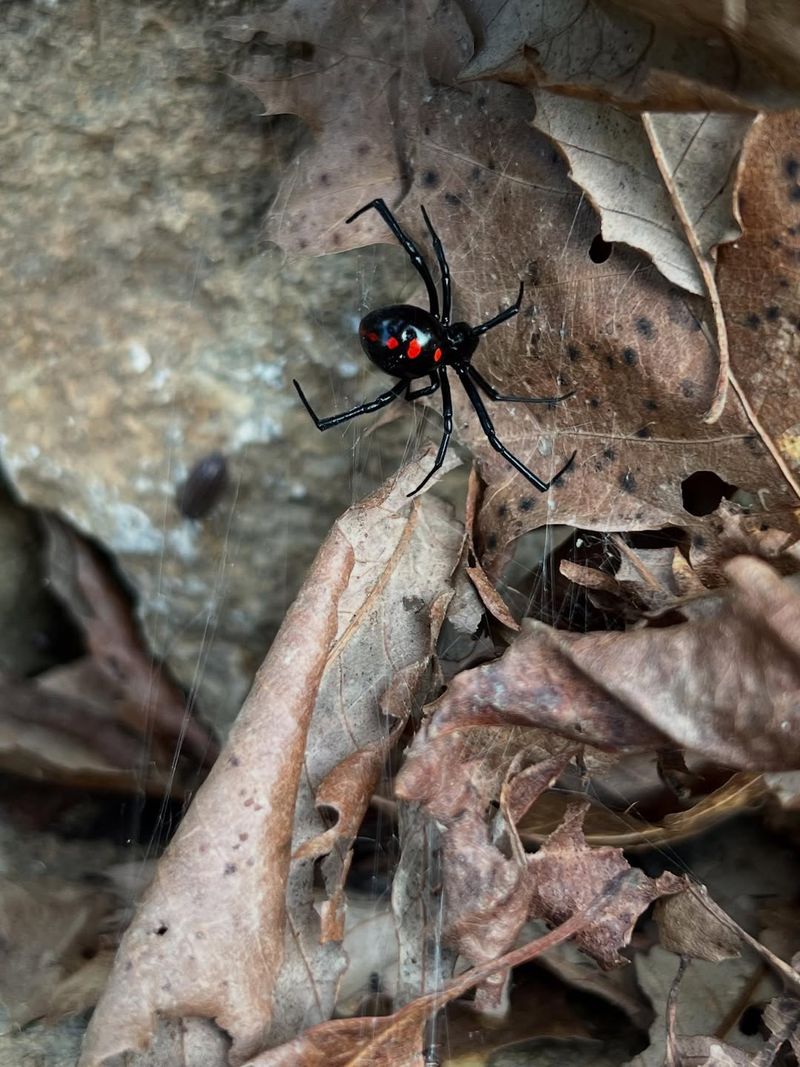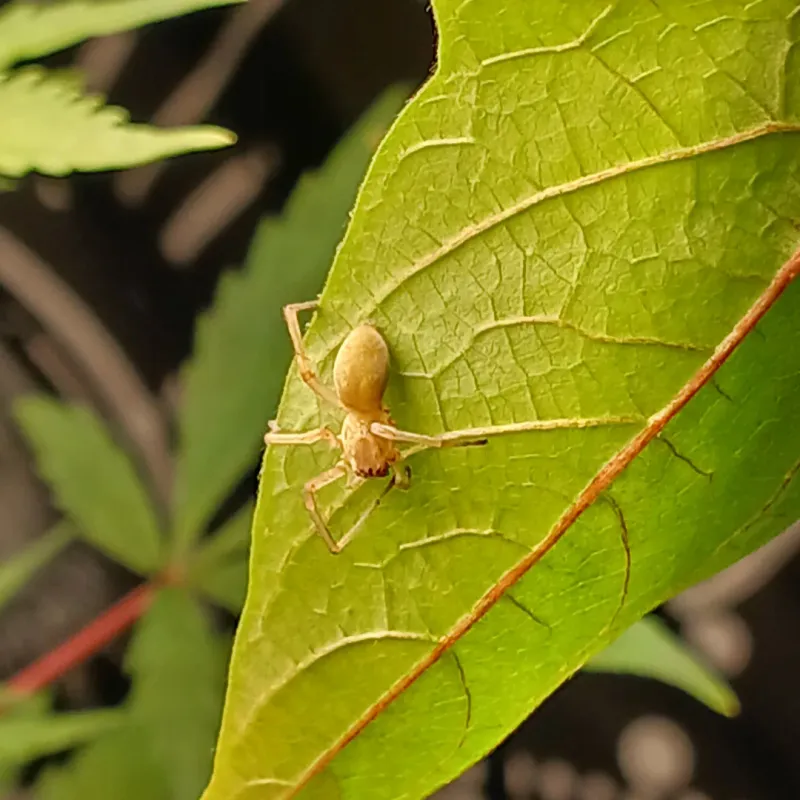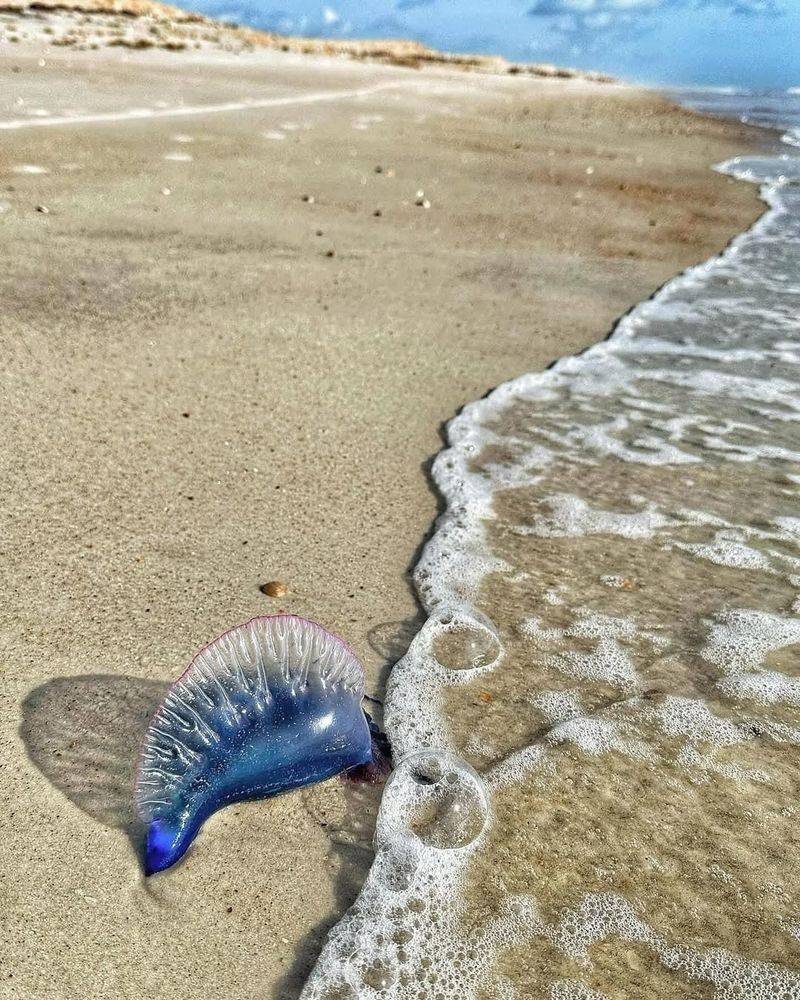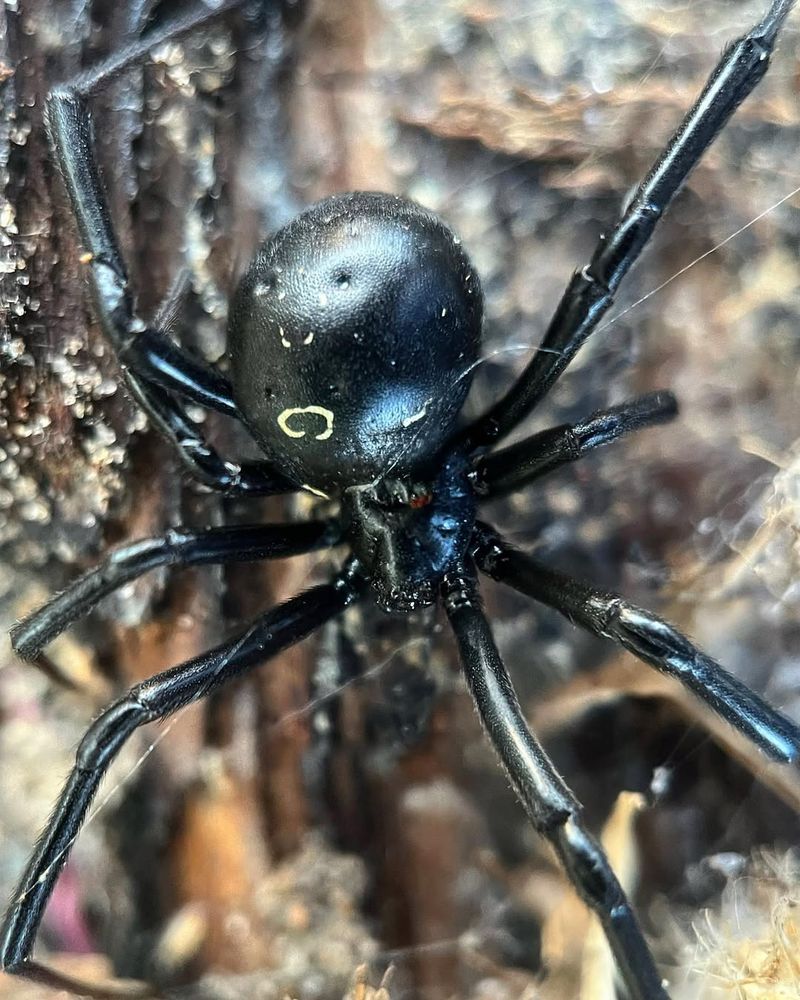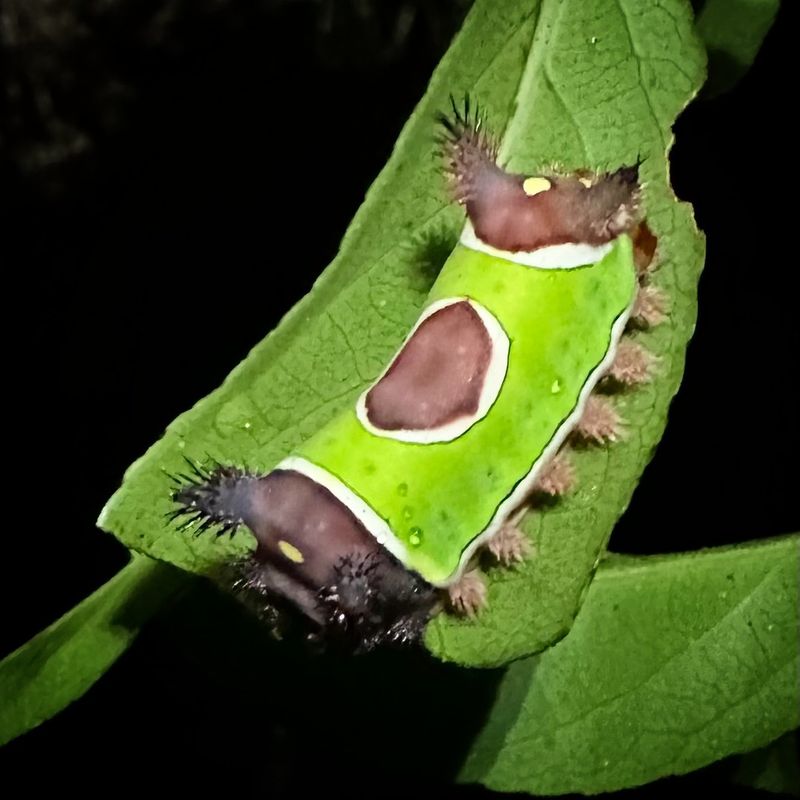South Carolina’s diverse ecosystems harbor several dangerous critters that can deliver painful and potentially deadly venom. Knowing which creatures to watch for while hiking, gardening, or swimming could save your life or prevent a trip to the emergency room.
Whether you’re a lifelong resident or new to the Palmetto State, understanding these venomous neighbors is essential for safely enjoying the outdoors.
1. The Eastern Diamondback Rattlesnake
North America’s largest venomous snake packs a potent punch with hemotoxic venom that destroys tissue and prevents blood from clotting. These impressive reptiles can grow over 7 feet long and weigh up to 10 pounds.
Distinguished by diamond-shaped patterns along their backs and the iconic rattle on their tails, they prefer pine forests and palmetto thickets. When encountered, they’ll usually warn you with their distinctive rattle before striking, so give them plenty of space if you hear that sound.
2. Timber Rattlesnake
Often called canebrake rattlesnakes in coastal regions, these adaptable serpents inhabit mountains, piedmont, and coastal areas throughout South Carolina. Their color varies from yellow-brown to almost black, with dark V-shaped crossbands running down their bodies.
Unlike their eastern cousins, timber rattlers sometimes hunt without warning. Their venom causes severe pain, tissue damage, and internal bleeding. When hiking in wooded areas, stick to clear paths and watch where you place your hands and feet to avoid surprising these powerful predators.
3. Cottonmouth (Water Moccasin)
Swimming with a cottonmouth is a nightmare scenario for many South Carolinians. These semi-aquatic pit vipers inhabit swamps, marshes, and slow-moving waterways across the state, especially in the Lowcountry.
Recognizable by their blocky heads and the white lining of their mouths (displayed when threatened), cottonmouths deliver venom that destroys red blood cells and tissue. Young cottonmouths are often confused with non-venomous water snakes, but the distinctive head shape and vertical pupils offer clues to their dangerous identity.
4. Copperhead Snake
Masters of camouflage, copperheads blend perfectly with fallen leaves on forest floors. Their hourglass-shaped copper bands against a tan background make them nearly invisible until it’s too late.
Responsible for more venomous bites than any other snake in South Carolina, these ambush predators rarely retreat when encountered. Thankfully, their venom is less potent than other pit vipers, though still extremely painful. Wearing closed shoes and using a flashlight when walking at night can help prevent stepping on these well-camouflaged snakes.
5. Coral Snake
Remember the rhyme: “Red touches yellow, kills a fellow.” The eastern coral snake’s striking red, yellow, and black bands make it one of South Carolina’s most recognizable venomous residents.
Unlike pit vipers, coral snakes have potent neurotoxic venom affecting the nervous system. Fortunately, their reclusive nature and reluctance to bite makes encounters rare. Small and slender, they spend most time underground or hidden in leaf litter in the coastal plain. Their non-venomous mimic, the scarlet kingsnake, has red bands touching black instead of yellow.
6. Brown Recluse Spider
Violin-shaped markings on their backs give these spiders their nickname “fiddle-backs.” Though less common in South Carolina than in neighboring states, established populations exist, particularly in the Upstate.
Their venom contains an enzyme that destroys surrounding tissue, creating wounds that may take months to heal. Brown recluses prefer dark, undisturbed areas like woodpiles, attics, and closets. Shake out stored clothing and shoes before wearing them, especially items unused for extended periods. Their small size (quarter-sized including legs) makes them easy to miss.
7. Black Widow Spider
Glossy black bodies adorned with the infamous red hourglass marking make black widows instantly recognizable. Female widows, the dangerous sex, build irregular webs in dark, protected spaces like garages, woodpiles, and underneath outdoor furniture.
Their neurotoxic venom causes intense pain, muscle cramping, and in severe cases, breathing difficulties. Despite their fearsome reputation, these spiders only bite defensively when disturbed. Wearing gloves when gardening or moving stored items provides protection against their painful bite. Males, much smaller and brownish, pose little threat to humans.
8. Yellow Sac Spider
Pale yellow to beige in color, these small hunters prowl walls and ceilings at night, building no permanent webs. Yellow sac spiders cause more bites than any other spider species in South Carolina, though they’re often overlooked in favor of their more infamous cousins.
Their cytotoxic venom creates painful, slow-healing wounds similar to mild brown recluse bites. During daytime, they hide in silk retreats in ceiling corners, behind pictures, or in folded clothing. Regular house cleaning, especially in ceiling corners and closets, helps reduce encounters with these nocturnal wanderers.
9. Portuguese Man-of-War
Though technically not a jellyfish but a colony of organisms, the Portuguese man-of-war delivers one of the ocean’s most painful stings. Their distinctive purple-blue air bladders float above water while tentacles stretch up to 100 feet below, loaded with venom-filled cells.
Strong winds occasionally blow these creatures onto South Carolina beaches, creating hazards for swimmers and barefoot beachcombers. Even dead specimens washed ashore can sting for weeks. If stung, rinse with seawater (never freshwater), remove tentacles with a stick or card, and seek medical attention for severe reactions.
10. Southern Black Widow
A regional variant of the black widow, the southern black widow features a distinctive broken hourglass marking that sometimes resembles two triangles. These arachnids frequently build webs near ground level in protected spaces outdoors.
Garden sheds, outdoor restrooms, and dense vegetation provide perfect hiding spots for these venomous spiders. Their painful bite can cause severe abdominal cramping, sweating, and elevated blood pressure. Children and elderly individuals face greater risk of serious complications. Keeping areas around homes clear of debris reduces the likelihood of unwanted encounters.
11. Stinging Caterpillars
Fuzzy doesn’t always mean friendly in South Carolina. Several caterpillar species, including the saddleback, puss, and io moth caterpillars, carry venomous spines that cause painful stings and rashes.
The puss caterpillar, resembling a moving tuft of cotton candy, ranks among the most venomous caterpillars in the United States. Their sting feels like a bee swarm and can cause intense pain, swelling, nausea, and even chest pain. These caterpillars typically appear in late summer and fall, often on oak and elm trees. Teach children to admire but never touch unfamiliar caterpillars.

